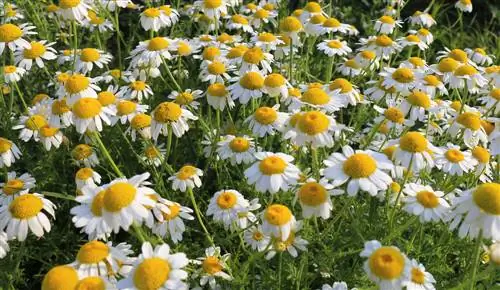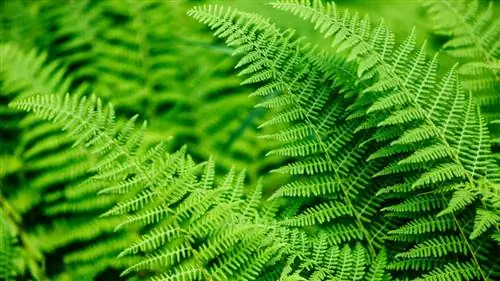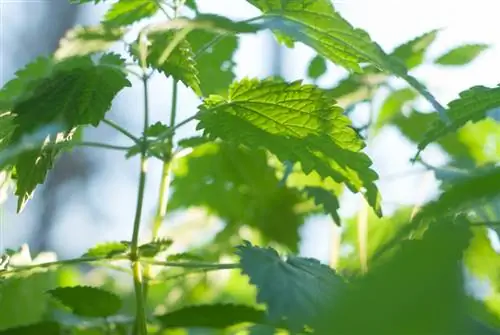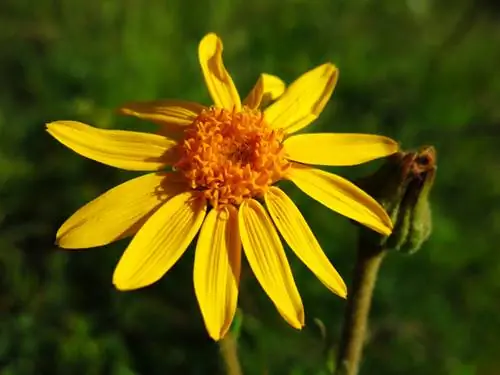- Author admin [email protected].
- Public 2023-12-16 16:46.
- Last modified 2025-06-01 06:02.
Chamomile has been valued for its healing properties for thousands of years. The Egyptians worshiped it as the flower of the sun god, and the Germanic tribes even considered it one of the nine sacred plants. To this day, no herbal pharmacy can do without this medicinal plant, which can also be easily cultivated in the home garden.
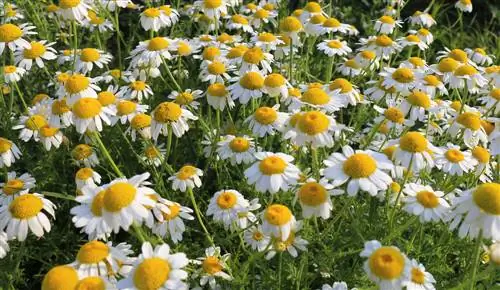
What is a chamomile profile?
Chamomile (Matricaria recutita) is an annual medicinal plant from the Asteraceae family. It grows 15-50 cm high, has juicy green, bi- or tri-pinnate leaves and white, yellow flowers. The main flowering period is May to July. Chamomile prefers sunny, dry locations and is particularly valued for its anti-inflammatory, antibacterial and antispasmodic effects.
Plant profile:
- Botanical name: Matricaria recutita, Matricaria chamomilla
- Other names: field chamomile, hermel, garmille, maid's flower, sorrow flower
- Order: Asters (Asterales)
- Genus: Chamomile
- Family: Asteraceae
- Growth height: 15 - 50 centimeters
- Growth habit: Annual clump-forming, loose, bushy
- Main flowering period: May to July
- Leaf color: Juicy green
- Leaf shape: Double or triple pinnate
- Flower color: white, yellow
- Flower shape: flower head
Origin
Chamomile was originally native to southern Europe, the Mediterranean region and Asia Minor and is now found throughout Europe. The medicinal herb can be found growing wild, especially on fallow land as well as on field and roadsides.
Planting and care:
Chamomile prefers a sunny, warm and rather dry place. The substrate should be deep. It is important that the water can drain well, as the plant is sensitive to waterlogging.
You can easily grow the medicinal plant yourself from seeds available from specialist retailers (€1.00 on Amazon). Sow these in rows from April. Since chamomile is a light germinator, the seeds are only lightly pressed but not covered with soil. As soon as the third pair of leaves appears, separate the plants to 20 centimeters.
Propagation:
In the fall, let a few flower heads stand and fall off, along with the chamomile itself. Next spring, new plants will appear in the immediate vicinity of the mother plant without any further action.
Harvest chamomile
Pick the flowers, preferably in the morning hours, before they are fully open. At this point they contain the highest amount of valuable essential oils.
After harvesting, the flowers are dried on a spread out cloth in an airy place. Store the medicinal herb in dark, well-sealed containers so that the ingredients are preserved.
Diseases and pests:
Although chamomile is quite robust, it is susceptible to powdery mildew and downy mildew. In wet years there is also a risk of infestation with fungal diseases.
Chamomile is also occasionally attacked in the home garden by the chamomile smooth beetle or the chamomile stem weevil. To keep the animals away from the plants, you can cover the medicinal plant with nets or plant fleece.
The healing effect
Chamomile is valued for its anti-inflammatory, antibacterial, antispasmodic and calming properties. She comes at:
- Gastrointestinal complaints,
- Inflammation of the skin and mucous membranes,
- Colds,
- Sunburn,
- Menstrual problems
for use.
A brew is usually prepared. To do this, put about three teaspoons of the flowers in a cup and pour hot water over them. Let it steep for ten minutes and strain.
Tip
The real chamomile is often confused with the genus of dog chamomile (Anthemis). A clear distinguishing feature is the smell, because dog chamomile exudes a strong, pungent aroma that in no way resembles the delicate scent of real chamomile.

